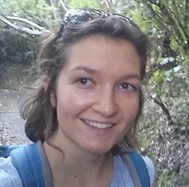Research interests
I am an evolutionary ecologist interested in viral ecology and species invasions.
My research combines field studies with molecular tools, phylogenetics, and ecological modelling.

Scientific projects
As part of the ERC-funded BeePath project, I study how the introduction of a vector affects viral pathogens in bee communities. Novel transmission routes can alter a pathogen's fitness landscape. The species jump and subsequent spread of the parasitic mite and virus vector Varroa have led to the re-emergence of the deformed wing virus in honey bees, a now highly prevalent pathogen linked to the death of honey bee colonies. As with many RNA viruses, deformed wing virus infects multiple host species including wild bumble bees, although bumble bees are not parasitized by Varroa. We compare honey bee and bumble bee populations from islands that have been invaded by Varroa and Varroa-free islands to study how the introduction of vector-mediated transmission affects pathogen epidemiology and evolution.
I started working on the BeePath project with Lena Wilfert in 2021. Before that, I did my PhD at Victoria University of Wellington in New Zealand with Phil Lester, where I studied the effect of invasive Argentine ants on viral disease in honey bees. I have a B.Sc. and an M.Sc. from the University of Münster. My Master's research project focused on the effect of genetic diversity on fitness in invasive wasps.
Publications
2024
Dobelmann J, Manley R and Wilfert L (2024). Caught in the act: the invasion of a viral vector changes viral prevalence and titre in native honeybees and bumblebees. Biol. Lett. 20:20230600
http://doi.org/10.1098/rsbl.2023.0600
2023
Dobelmann J, Felden A & Lester PJ (2023). An invasive ant increases deformed wing virus loads in honey bees. Biology Letters, 19(1): 20220416. https://doi.org/10.1098/rsbl.2022.0416
Felden A, Dobelmann J, Baty JW, McCormick J, Haywood J & Lester PJ (2023). Can immune gene silencing via dsRNA feeding promote pathogenic viruses to control the globally invasive Argentine ant? Ecological Applications, 33(2): e2755. https://doi.org/10.1002/eap.2755
2021
Remnant EJ, Baty JW, Bulgarella M, Dobelmann J, Quinn O, Gruber MAM, Lester PJ. A (2021) A Diverse Viral Community from Predatory Wasps in Their Native and Invaded Range, with a New Virus Infectious to Honey Bees. Viruses 13(8): 1431. https://doi.org/10.3390/v13081431
2020
Dobelmann J, Felden A & Lester PJ (2020). Genetic strain diversity of multi-host RNA viruses that infect a wide range of pollinators and associates is shaped by geographic origins. Viruses, 12(3): 358. https://doi.org/10.3390/v12030358
Baty JW, Bulgarella M, Dobelmann J, Felden A & Lester PJ (2020). Viruses and their effects in ants (Hymenoptera: Formicidae). Myrmecological News, 30: 213-228. https://doi.org/10.25849/myrmecol.news_030:213
Felden A, Baty JW, Bulgarella M, Brown R, Dobelmann J, Gruber MAM, Quinn O & Lester PJ (2020). Viral and fungal pathogens associated with Pneumolaelaps niutirani (Acari: Laelapidae), a mite found in diseased nests of Vespula wasps. Insectes Sociaux, 6(49): 83-93. https://doi.org/10.1007/s00040-019-00730-y
2019
Dobelmann J, Alexander A, Baty JW, Gemmell NJ, Gruber MAM, Quinn O, Wenseleers T & Lester PJ (2019). The association between mitochondrial genetic variation and reduced colony fitness in an invasive wasp. Molecular Ecology, 28(14): 3324-3338. https://doi.org/10.1111/mec.15159
Gruber MAM, Quinn O, Baty JW, Dobelmann J, Haywood J, Wenseleers T & Lester PJ (2019). Fitness and microbial networks of the common wasp, Vespula vulgaris (Hymenoptera: Vespidae), in its native and introduced ranges. Ecological Entomology, 44(4): 512-523. https://doi.org/10.1111/een.12732
2018
Brenton-Rule EC, Dobelmann J, Baty JW, Brown RL, Dvorak L, Grangier J, ... & Lester PJ (2018). The origins of global invasions of the German wasp (Vespula germanica) and its infection with four honey bee viruses. Biological Invasions, 20(12): 3445-3460. https://doi.org/10.1007/s10530-018-1786-0
2017
Dobelmann J, Loope KJ, Wilson‐Rankin E, Quinn O, Baty JW, Gruber MAM & Lester PJ (2017). Fitness in invasive social wasps: the role of variation in viral load, immune response and paternity in predicting nest size and reproductive output. Oikos, 126(8): 1208-1218. https://doi.org/10.1111/oik.04117
Contact
- Dr. Jana Dobelmann
Institute of Evolutionary Ecology
and Conservation Genomics
University of Ulm
Albert-Einstein-Allee 11
89081 Ulm
Germany
- Email: jana.dobelmann () uni-ulm.de
